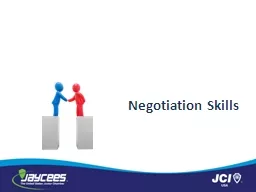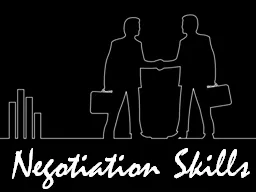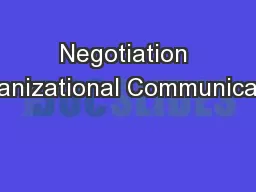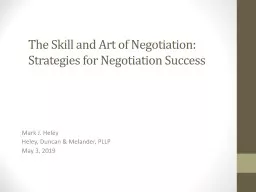PPT-Negotiation Skills
Author : tawny-fly | Published Date : 2016-11-23
Module One Getting Started Welcome to the Negotiation Skills workshop Although people often think of boardrooms suits and million dollar deals when they hear the
Presentation Embed Code
Download Presentation
Download Presentation The PPT/PDF document "Negotiation Skills" is the property of its rightful owner. Permission is granted to download and print the materials on this website for personal, non-commercial use only, and to display it on your personal computer provided you do not modify the materials and that you retain all copyright notices contained in the materials. By downloading content from our website, you accept the terms of this agreement.
Negotiation Skills: Transcript
Download Rules Of Document
"Negotiation Skills"The content belongs to its owner. You may download and print it for personal use, without modification, and keep all copyright notices. By downloading, you agree to these terms.
Related Documents














